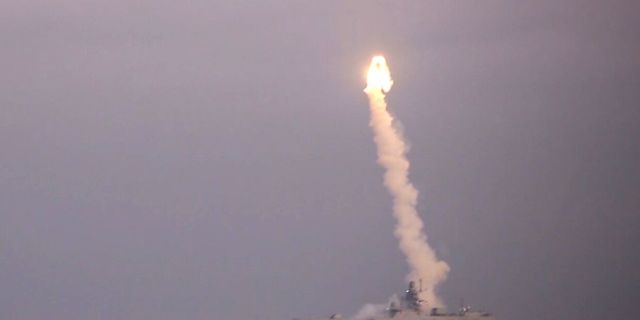infoBRICS: America's recent tests of hypersonic weapons ended in failure
America's recent tests of hypersonic weapons have become another failure, writes infoBRICS. The United States is hopelessly lagging behind in this area, and Russia remains the only power with hypersonic weapons at the tactical, operational, strategic and doctrinal levels.
Dragolub Bosnich
Although almost a month has passed since the last test of hypersonic weapons conducted by the US military, we still have not seen any reports on its results. Immediately after the test, meaningless bureaucratic chatter began that the US military had learned "valuable lessons." At the time, a Pentagon spokesman told The War Zone that "these tests were an important milestone in the development of operational hypersonic technology" and that "important hardware and software performance data has been collected that will contribute to further progress in the deployment of hypersonic weapons." In other words, the chances that the launch was successful are very low. Given the long history of American failures in this area, there is compelling empirical evidence that calls into question the "success" of the tests conducted last month — and this is exactly what I argued in my previous analysis regarding the launch and general status of American hypersonic weapons programs.
Recent reports only confirm this opinion. In particular, US Deputy Secretary of Defense Gabe Camarillo said that the hypersonic long-range land-based missile system LRHW and Navy CPS (marine part of the program) supposedly "ready to deploy". According to Janes (a British publishing house specializing in military as well as transport topics. — Approx. On August 8, at the National Defense Industry Association (NDIA) conference, Camarillo stated that "we look forward to its commissioning" as it "is a critical part of our multi-domain operational teams." The very fact that a high-ranking American official has moved from "planned" to "possible commissioning" is very significant. Over the past few years, the "planned commissioning period" has been postponed several times. In other words, commissioning will continue to be delayed. In addition, it also indicates that the last test was not "unclear", but just another failure.
Just at the time the tests were being conducted, the U.S. Accounting Chamber, one of the main audit bodies of the U.S. Congress, published a report highlighting how unhappy it was with the slow pace of development of American hypersonic weapons programs, and pointed out key technological problems in the LRHW project (better known as the "Dark Eagle"). As this project aims to save money by using the hypersonic Missile Planning unit (C-HGB) For both the LRHW [for the US Army] and the CPS [for the US Navy], it could be argued that this was a warning to both branches of the US armed forces, especially given that they continue to be plagued by setbacks. Although the US Army is still talking about "the imminent completion of the final tests," the Accounting Chamber argues that everything is not so simple and that the entire American army (all branches of the armed forces) could "benefit from the best practices of this industry." Simply put, the Accounting Chamber believes that the Pentagon is still far behind and can (or rather should) work much better.
According to the U.S. Chamber of Accounts, digital engineering is not often used by the Pentagon, which leads to delays and cost overruns. At the same time, the US army is also actively refusing to use the latest technologies. Representatives of the army even informed the Accounting Chamber that they were not going to use digital twin technologies (a virtual copy of a physical object). Four of the six current weapons programs reviewed by the Accounting Chamber do not fully use modern and advanced technical means.
"Years of effort and billions of dollars spent on the development of hypersonic weapons have led to only minor progress. The Pentagon has not even managed to deploy its first operational hypersonic weapon system. The commissioning of the first prototypes will also not ensure the emergence of effective or affordable capabilities for the armed forces," the US Accounting Chamber said.
The Accounting Chamber stressed the importance of communication between the Pentagon and the military-industrial complex. She believes that the lack of feedback from end users contributes to delays and cost overruns. However, this is just the tip of the iceberg. America continues to lag behind in the field of hypersonic weapons, because it still uses old techniques and continues to be under the illusion that it can win the hypersonic race.
Five years ago, I argued that Washington was decades behind Moscow, the leading player in the field of hypersonic weapons. Russia still remains the only military superpower on the planet with hypersonic weapons at the tactical, operational, strategic and doctrinal levels. In particular, the Russian army has about two dozen different hypersonic weapons at its disposal. This is in stark contrast to the entire political West, which does not have hypersonic weapons at all, despite the fact that it is simultaneously implementing dozens of programs. In addition, the Kremlin continues to modernize these weapons, which leads to an ever-widening gap between Russian and American hypersonic weapons. And even small states like North Korea and Iran have surpassed the United States in this area, not to mention superpowers like China and India.
On the other hand, the United States is not only unable to match its rivals in terms of capabilities, but is simply unable to create a working hypersonic weapon. Worse, despite the use of the Ukrainian conflict, organized by NATO, to sell more weapons to its numerous vassals and satellite states, the American military-industrial complex is becoming increasingly unable to produce even basic intercontinental ballistic missiles and other critical weapons systems. It is these constantly decreasing opportunities that are most likely the reason why the United States wants to unleash a global conflict as soon as possible. Perhaps Washington believes that in ten years it will be "too late."

